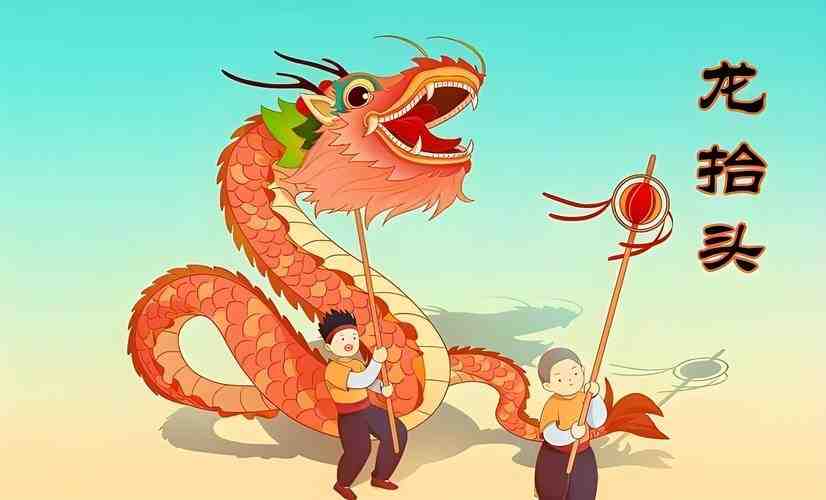|
|
非本届同学勿发图发帖
您需要 登录 才可以下载或查看,没有账号?立即注册 
×
民间传说—二月二龙抬头
“二月二,龙抬头”是中国民间传统节日中的重要说法,其起源与自然天象、农耕文化以及民间传说密切相关。以下从几个方面解析这一说法的由来和意义:
一、天文背景:苍龙七宿的星象变化
中国古代天文学将星空分为二十八宿,其中东方七宿(角、亢、氐、房、心、尾、箕)组成“苍龙”的星象。
**冬季**:苍龙七宿隐没于地平线以下,古人认为“龙潜于渊”。
**仲春(农历二月二前后)**:代表龙角的“角宿”开始从东方地平线升起,仿佛巨龙抬头,故称“龙抬头”。
这一星象标志着阳气上升、雷雨增多,万物复苏,与农耕活动息息相关。
二、农耕文化:春耕开始的标志
农历二月初二正值“惊蛰”与“春分”之间,是农业社会的重要节点:
1. **春雷始鸣**:古人认为雷声唤醒蛰伏的昆虫和动物,象征大地回春。
2. **雨水渐丰**:龙在中国文化中是掌管云雨的神灵,“龙抬头”寓意雨水充沛,利于播种。
3. **农事开端**:此时气温回升,农民开始整地、施肥,祈求一年风调雨顺、五谷丰登。
三、民间传说与信仰
不同地区流传着多种故事,以下是两个常见版本:
1. 龙王降雨救苍生
传说武则天称帝触怒玉帝,玉帝命龙王三年不降雨。龙王不忍百姓受苦,私自降雨,被玉帝镇压于山下。百姓感念龙王恩德,日夜祈求,最终在二月初二感动玉帝,释放龙王。此后,人们在这一天祭拜龙王,祈求丰收。
2. 伏羲劝耕
相传伏羲氏重视农耕,每年二月初二亲自扶犁耕田,百姓效仿,逐渐形成春耕习俗,并衍生出“龙抬头”以象征农耕之始。
四、民俗活动与象征意义
**剃龙头**:民间认为这天理发能带来好运,寓意“辞旧迎新”。
**祭龙神**:部分地区举行祭祀仪式,祈求风调雨顺。
**食“龙”食**:吃面条称“扶龙须”,饺子为“龙耳”,春饼为“龙鳞”,寄托对美好生活的期盼。
**驱虫避害**:撒草木灰、敲房梁驱赶毒虫,寓意祛除晦气。
五、文化内涵的延续
“龙抬头”不仅是自然节令的象征,更体现了古代中国人对自然的敬畏、对农业的依赖,以及通过仪式祈求和谐共生的智慧。如今,这一传统在现代社会仍被传承,成为凝聚文化认同的重要载体。
总结:从星象观测到农耕实践,从神话传说到民俗仪式,“二月二龙抬头”承载着中国人对自然规律的观察、对丰收的祈愿,以及对“天人合一”理念的深刻理解。
这些民间传说你了解了吗?
Folklore: Dragon Rising on February 2 "The dragon rises on February 2," is an important expression in Chinese folk traditional festivals, and its origins are closely related to natural signs, farming culture, and folklore. Here is an explanation of the origin and significance of this statement from several aspects: 1. Astronomical background: changes in the horoscope of the seven nights of the dragon Ancient Chinese astronomy divided the stars into twenty-eight nights, of which seven nights in the east (Cape, Pang, Zheng, Fang, Heart, Tail and Pi) make up the horoscopes of the "dragon." * * Winter * *: Seven nights of the dragon are hidden below the horizon, and the ancient people believed that "the dragon dives in the abyss." * * Mid-spring (around February 2 of the lunar calendar) * *: The "horn sleep," which represents the dragon's horn, begins to rise from the eastern horizon, as if the dragon is raising its head, hence the name "dragon raising its heads." This star marks the rise of the sun, the increase of thunderstorms, and the recovery of everything, which is closely related to agricultural activities. The second day of the second lunar month is between "The Waking of Insects" and "The Spring Equinox." 2. * * The dragon is the deity in charge of cloud and rain in Chinese culture. "Dragon Raising Its Head" means abundant Rain Water is good for sowing. 3. * * Farming Begins * *: At this time, temperatures are rising, and farmers begin to clear the land and apply fertilizer, hoping for a year of good weather and good crops. III. Folklore and beliefs A variety of stories are told in different regions. Here are two common versions: 1. The Dragon King Saving Lives Legend goes that Wu Zetian claimed that the emperor was angry with the ee. The ee ordered the dragon king not to rain for three years. The Dragon King did not bear the suffering of the people, and he rained the rain alone, and was crushed by the Emperor on the mountain. The people missed the Dragon King's grace and prayed day and night, and finally, on the beginning of February, the Emperor moved and released the Dragon King. Later, on this day, people worshiped the dragon king and prayed for a good harvest. 2. Wu Xi encouraged farming According to legend, Wu Xi attached great importance to farming, and every year on the beginning of February, he personally plowed the fields. The people followed suit, gradually forming the custom of spring farming, which derived the "dragon rising" to symbolize the beginnings of farming. IV. Folk activities and symbolism * * Shaving the head * *: Folks believe that cutting a hair on this day brings good luck, meaning to "renounce old ways and welcome new ones." * * Dragon sacrifice * *: In some areas, sacrifices are held to pray for a favorable wind and rain. * * Dragon food * *: Eating noodles is called "dragon beard," dumplings are "dragon ears," spring cakes are "dragon scales," and hopes for a better life. * * Deter pests and avoid damage *: Sprinkle grass and wood ash and knock on the beams to drive away the poisonous insects, which is meant to eliminate evil spirits. V. Continuation of the cultural meaning "The dragon's head" is not only a symbol of natural rhythm, but also reflects the ancient Chinese's awe of nature, dependence on agriculture, and wisdom in praying for harmonious coexistence through ritual. Today, this tradition is still passed on in modern society and becomes an important vehicle for uniting cultural identity. Summary: From astrological observation to farming practices, from mythological legends to folk customs, the "two dragons rising in February" carries the Chinese people's observation of the laws of nature, their prayer for a good harvest, and their deep understanding of the concept of "oneness between nature and man." Do you know these folk tales?
|
-

|
 |手机版|内蒙电大赤峰分校84级工民建同学网站
( 蒙ICP备17002141号-1 )
|手机版|内蒙电大赤峰分校84级工民建同学网站
( 蒙ICP备17002141号-1 )